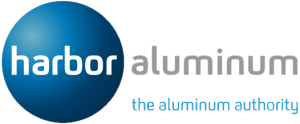Premiums in Asia increase amid less tight LME spreads; more downside than upside seen.
HARBOR’s MJP (Main Japanese Ports) CIF P1020 ingot spot transaction premium increased to a nine-month high of $94-$100 per mton, from a previous $92-$94 per mton, as recently confirmed spot activity has taken place within the new range.
During the past three weeks, MJP spot premiums have managed to increase from the low end of HARBOR’s estimated long-term equilibrium range of $70-$100 per mton, to levels at the high end of this range.
Spot premiums in Asia continue to be supported by less tight LME contangos during the past few weeks. The Cash-3M contango averaged $25 per mton in February, and stands unchanged so far in March- wide enough for a number of players to profitably finance short-term cash-and-carry positions (reducing pressure to offer discounts). Moreover, market sources indicate that spot supply has seen a shortage in recent weeks amid reports of increased vessel traffic and congestion at the Main Japanese Ports.
Meanwhile, Q2 premium contracts have been agreed at $105 per mton. HARBOR has received confirmation of multiple contractual premium negotiations for April-June 2019 MJP delivery settling at $105 per mton. As we previously reported, we expected MJP Q2 contractual premiums to experience a downward correction from initial indications of $118 per mton. Recent settlements represent a 25% increase to Q1 2019 contractual premiums, and a 19% y/y decline to Q2 2018.
Moreover, HARBOR’s South Korean CIF P1020 ingot spot transaction premium increased on the high end to a three-month high of $45-$100 per mton, from $45-$90 per mton. Market sources indicate that P1020 demand in South Korea and Southeast Asia has been strong in recent weeks, with consumers increasing their share of spot volumes against contractual metal. However, we continue to hear that Chinese P1020 coils represent a significant share of demand in the region.
Nevertheless, we believe that upside for MJP spot premium looks limited as:
a) Tight LME spreads will likely return soon. The combination of i) re-emergence of a dominant warrant holder earlier this week, ii) the formation of concentrated long positions in the next few weeks, and iii) LME live inventories standing near a twelve-year low, could be supportive of tighter nearby spreads (backwardations) ahead.
b) Underlying demand weakness/contraction in the region. February manufacturing activity data shows the Japanese index falling into contraction territory for the first time since August 2016, after several months of continued slowdown.
c) Exports of Chinese-origin aluminum flat-rolled products, extrusions, and P1020 semis being offered at attractive prices, which continues to cannibalizing primary aluminum demand in the Asian region.
In fact, port aluminum stocks increased in February to a near-two-year high.Reported inventories at Main Japanese Ports (Yokohama, Nagoya, and Osaka) stood at a six-month high of 319.7 kmton by the end of February, increasing 1.7% m/m (up 17.5% y/y) and within 2% of a two-year high reached by the end of August.
